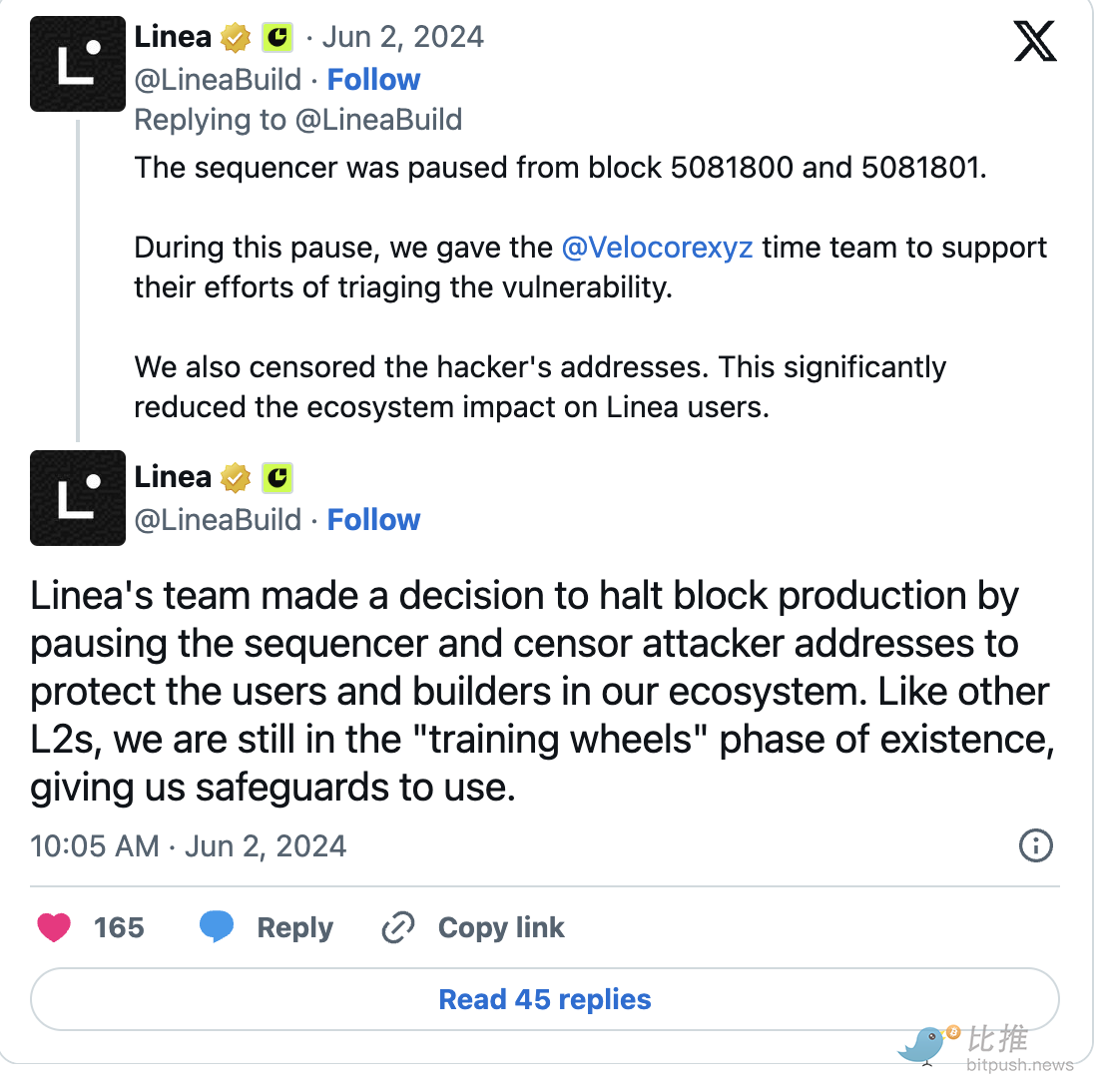Opinion: Layer 2 centralization is a time bomb for blockchain
Written by: Daranee Ganesh
Compiled by: BitpushNews Scott Liu
The sorter of Layer-2 solution is too centralized now, which bringsBlockchainThe industry has brought huge hidden dangers. If timely measures are not taken,BlockchainThe decentralization principle of the network will be threatened, and a crisis of trust will follow.SafetyTo ensure the security of Layer-2, Layer-2 projects must promote transformation as soon as possible to eliminate single points of failure.
If not dealt with in time, the networkSafetywill be seriously threatened, and the entire ecosystem will face challenges including transaction review,SafetyA series of problems such as vulnerabilities and even leakage of customer data and funds.
Since the second quarter of 2024, Layer-2 solutions based on the Ethereum network have processed 12 times the transaction volume of the Ethereum mainnet. In addition, the total locked value (TVL) of the Layer-2 ecosystem has increased by 1.3% on June 6. Xiaobai NavigationThe total value of the network reached 49 billion U.S. dollars on July 1, 2019, setting a new record high of 49 billion U.S. dollars. These data show that the popularity of Layer-2 networks is accelerating. However, with the increase in popularity, new problems have also arisen - the centralization of sorter operations has become increasingly serious.
The sorter is a crucial part of the Layer-2 network, responsible for sorting and packaging transactions before submitting them to the Ethereum mainnet. However, this efficient operation comes at the cost of loss of decentralization, and the sorter is gradually becoming a "double-edged sword".
In Ethereum's Layer-2 solution, the sorter is responsible for managing the transaction data flow. When multiple transactions occur at the same time, the sorter decides which transaction to process first. This process is often controlled by a single entity. Although it can improve transaction processing efficiency, it also brings huge risks to censorship and manipulation.
These concerns are not unfounded. Most mainstream Layer-2 solutions today rely on centralized sorters, which are usually managed by the companies that build these rollups. For example, data shows that Coinbase's Base network generated $30 million in revenue for the company in March 2024 alone through sorter fees, and annualized revenue can reach approximately $360 million.
In an increasingly decentralized industry, trust should be minimized and controlled by a single companyBlockchainThe phenomenon of critical operations naturally raises widespread doubts.
Christine Kim, vice president of research at Galaxy Digital, said that decentralization should not be simply understood as a binary concept, but rather a spectrum, and the impact of centralization should be minimized as much as possible. She emphasized: "Promoting the implementation of decentralized sequencers may be one of the most challenging tasks in rollup projects, but it is also the key to increasing decentralization and enhancing resilience."
Recently, users of Linea, a zkEVM rollup backed by Consensys, suffered a loss of $2.6 million. Even more shocking, the project development team unanimously decided to suspend sorter operations and "block the attacker's address to protect the interests of users and developers."

这一事件凸显了排序器中心化的潜在危害,也警示我们去中心化的重要性。通过去中心化排序器,网络能够有效消除单点故障,增强对攻击和技术故障的抗风险能力。这不仅能提升网络的Safety性,还更加契合BlockchainThe core values of technology, especially in terms of transparency and efficiency.
Fortunately, most Layer-2 solutions have begun to realize the necessity of decentralization. By introducing a network of validators and block producers, Layer-2 solutions can achieve random selection and rotation of sorter nodes. These nodes share the responsibility of transaction sorting and packaging, greatly improving the security and stress resistance of the network.
This decentralized sorting mechanism not only ensures the fairness and security of the sorting process, but also significantly reduces the risk of censorship and manipulation without sacrificing performance. This move encourages moreCommunity参与,并在网络与用户之间建立了利益一致性,从而更好地贯彻了区块链的核心原则。
Recently, Vitalik Buterin proposed a classification system for rollup networks, dividing them from stage 0 to stage 2. He believes that most of the leading rollup projects currently still rely on some form of "training wheels."
Looking ahead, Layer-2 solutions must quickly get rid of these temporary measures, otherwise they will face the risk of stagnation or even elimination. Although centralization undoubtedly brings considerable economic benefits and operational convenience in the short term, it serves the interests of operators more. In contrast, decentralization, although full of challenges, can bring more benefits to projects and theirCommunityBring long-term stability and development.
这种“自我强化模式”不仅减少了安全成本,还启动了一个良性循环。社区参与度的提升带来了更多的质押,从而进一步增强了网络的安全性,吸引了更多的去中心化应用和创新者。
In addition, the decentralization of the sorterexchangeThe steady growth of (DEX) inflows also shows that users are fully willing to accept slight increases in latency as long as the incentive mechanism is in place. In addition to improving security through mechanisms such as liquid staking, decentralized sequencers also closely align the interests of industry participants and contributors with the growth of the ecosystem.
For example, the revenue sharing model of sorter mining effectively increases user participation and establishes a direct link between community participation, network security, and ecosystem growth. As the technical prototype matures, even the Bitcoin Layer-2 network has begun to provide mining rewards through decentralized sorters.
In the future, the Ethereum Layer-2 ecosystem cannot rely on just one network to achieve sorter decentralization. Decentralization across multiple networks is key to ensuring the integrity of blockchain technology. Established Layer-2 solutions must act quickly to avoid being eliminated by the market and ensure the safety of their users.
The article comes from the Internet:Opinion: Layer 2 centralization is a time bomb for blockchain
Related recommendation: Binance 2024 Semi-annual Report: 6 Key Themes to Watch
In the first half of 2024, the total market value of the crypto market increased by 37.3%, benefiting from the launch of the Bitcoin ETF and the strong growth of decentralized finance (DeFi). Written by: Binance Research Compiled by: Vernacular Blockchain After a significant increase of 109% in 2023, the crypto market continued to rise in the first half of 2024…